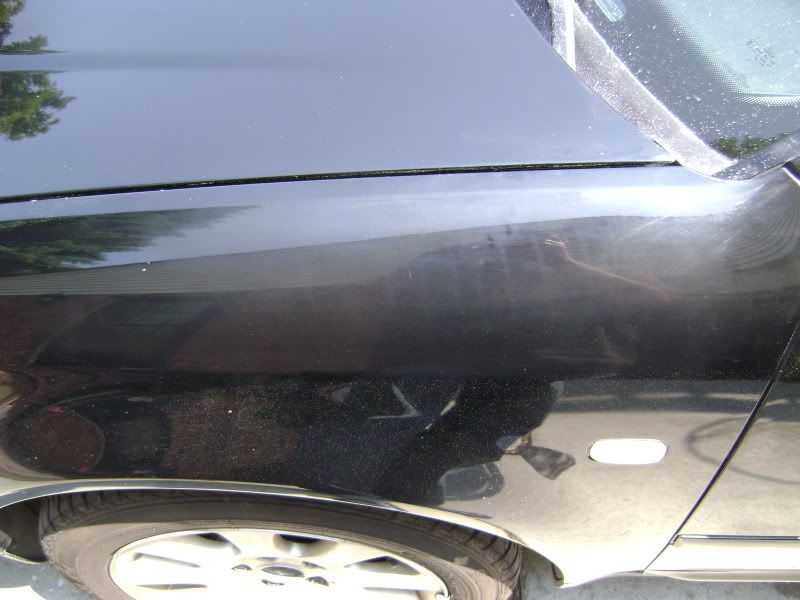i have a 99 Audi a6 i wet sanded the whole hood every time i compound it as soon as its wet its back to the dull dump again what should i use?????????
- If this is your first visit, be sure to check out the FAQ by clicking the link above. You may have to register before you can post: click the register link above to proceed. To start viewing messages, select the forum that you want to visit from the selection below.
Announcement
Collapse
No announcement yet.
Wet sand audi hood
Collapse
X
-
Re: Wet sand audi hood
Anyway to post up a few pictures of what you are describing...That would help us try and determine what is happening.Mike Pennington
Director of Global Training, Events and Consumer Relations
Meguiar's, Inc.
800-854-8073
mpennington@meguiars.com
Comment
-
Re: Wet sand audi hood
k il be posting pics in 15 minutes clear coat is still on there if i keep wet sanding im seeing white not black flakes and ive only used 2000 grit nothing less with the megs #4 heavy cut be what i need i am also using a rotary on lowest setting
Comment
-
Re: Wet sand audi hood
OK, it looks like you've got a few different things going on here so let's see if we can walk you through a process to clean this up.
First off, it appears that you haven't removed all the sanding marks. Second, you've also left behind a fair amount of buffer swirls or holograms. The general dullness is caused by the sanding marks, but it's those wispy little trails going back and forth that are caused by rotary buffing with a very aggressive compound. M04 Heavy Cut Cleaner is a great product, in the right context. For a modern clear coat, especially one that is potentially a very hard clear (Audi has a reputation for this, but it's not a 100% definitive statement about the hardness of Audi paint) there are better choices than M04. Add to that the fact that you've been running the rotary at the lowest speed, and it's no wonder you're not pulling out all your sanding marks.
Pick up some M105 Ultra Cut Compound and some M205 Ultra Finishing Polish. Use a wool cutting pad like our W5000 Double Sided Wool, W4000 Cut 'n' Shine wool pad with the M105 but turn up the speed on the rotary to at least 1400 rpm. You may need to go up to 1800 rpm to fully remove the sanding marks, depending on hardness of paint and overall depth of the sanding scratches. You should stay under 2000 rpm though, no matter what. Yes, we know you said you sanded with 2000 grit but you didn't go into any more detail than that. If you hand sanded we're hoping you used a backing pad rather than just your bare hand as this avoids deeper grooves being cut into the paint by the pressure points created by your fingers. Further, proper flooding or flushing of the surface and the sanding papers helps to reduce the incidence of tracers - those deeper scratches inflicted by a build up of debris (or even a single piece) that gets trapped between the sand paper and paint. These can be a chore to remove if they're deep enough. But all of these comments about sanding lead to this point - the more uniform the sanding marks the easier they are to buff out. That's true whether you used 2000 grit or not.
So, your process should go something like this:
Work in 2' x 2' areas with a wool pad, rotary set at 1400 rpm to start (1800 rpm if need be after checking this initial spot), M105, and keep that pad as flat against the paint as you can, and move it fairly slowly across the paint as well. You don't want to dwell in one area, but you don't want to sweep over the paint either.
Do that initial test spot, then double check your work in direct sunlight.
Once you're confident that you've gotten rid of the sanding marks, and feel free to wipe down your test area with a 50/50 mix of water and isopropyl alcohol, then continue with that process in similar sized sections until you've done the entire hood.
You should immediately see a reduction in the level of holograms when using M105 compared to M04, but you're likely to still have some. Get rid of those with the next step:
Switch to either a W8207 Soft Buff Polishing Pad or even a W9207 Soft Buff 2.0 Finishing Pad and the M205 Ultra Finishing Polish. Slow the tool down to somewhere in the 900 to 1100 rpm range, and use only light pressure or the weight of the tool itself. Keep the pad as flat as possible against the paint, and move it very slowly over the surface. Stay within a 2' x 2' area as before. Going up towards the edge of the pad and/or moving too quickly can result in some light hologramming, but slow, flat use will minimize or prevent this altogether. You really do need this step as a follow up to your compounding since that first step is just so aggressive. In order to achieve the final result you're after you need that second polish step to really refine and clarify the finish.Michael Stoops
Senior Global Product & Training Specialist | Meguiar's Inc.
Remember, this hobby is supposed to be your therapy, not the reason you need therapy.
Comment





Comment